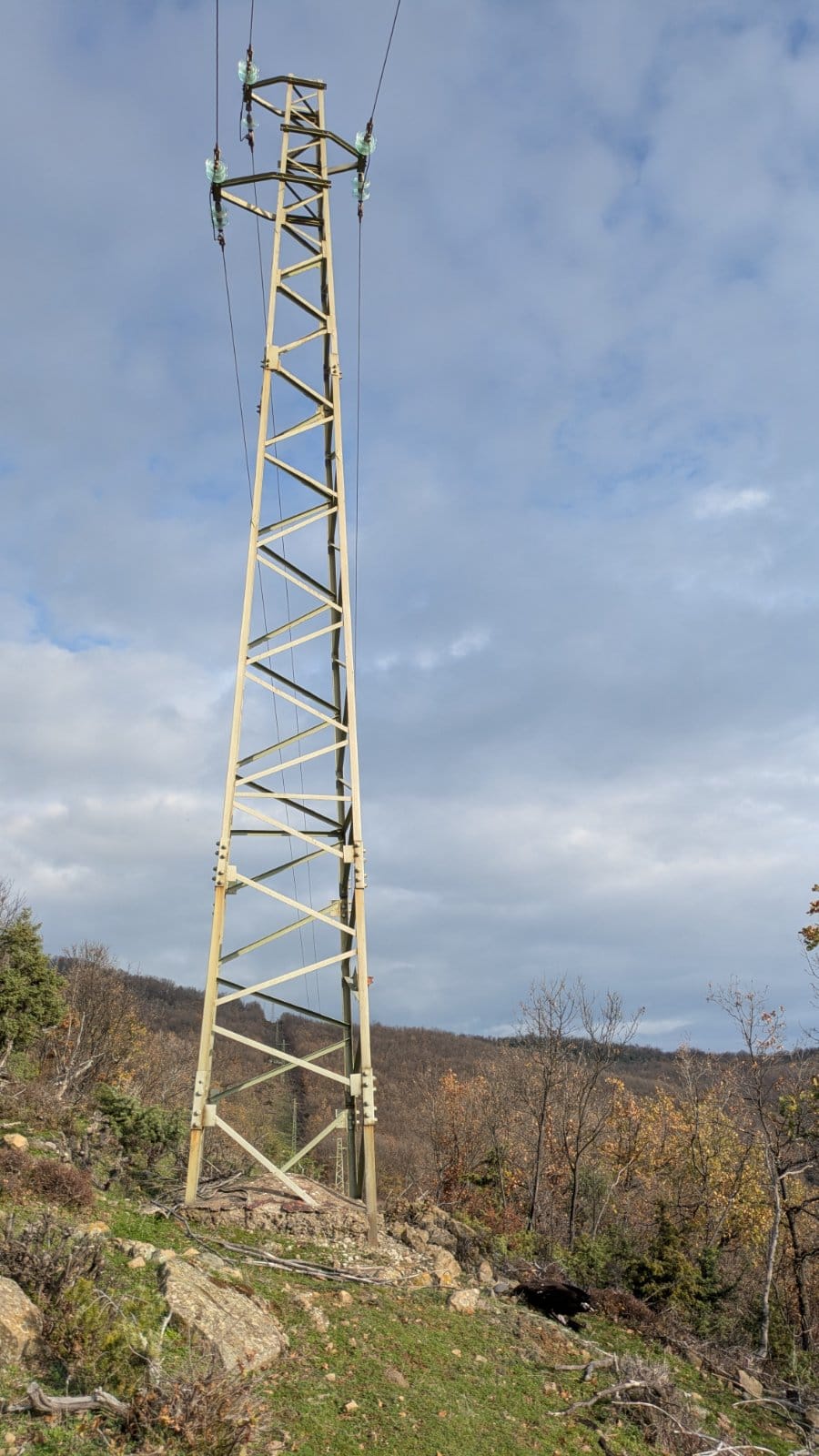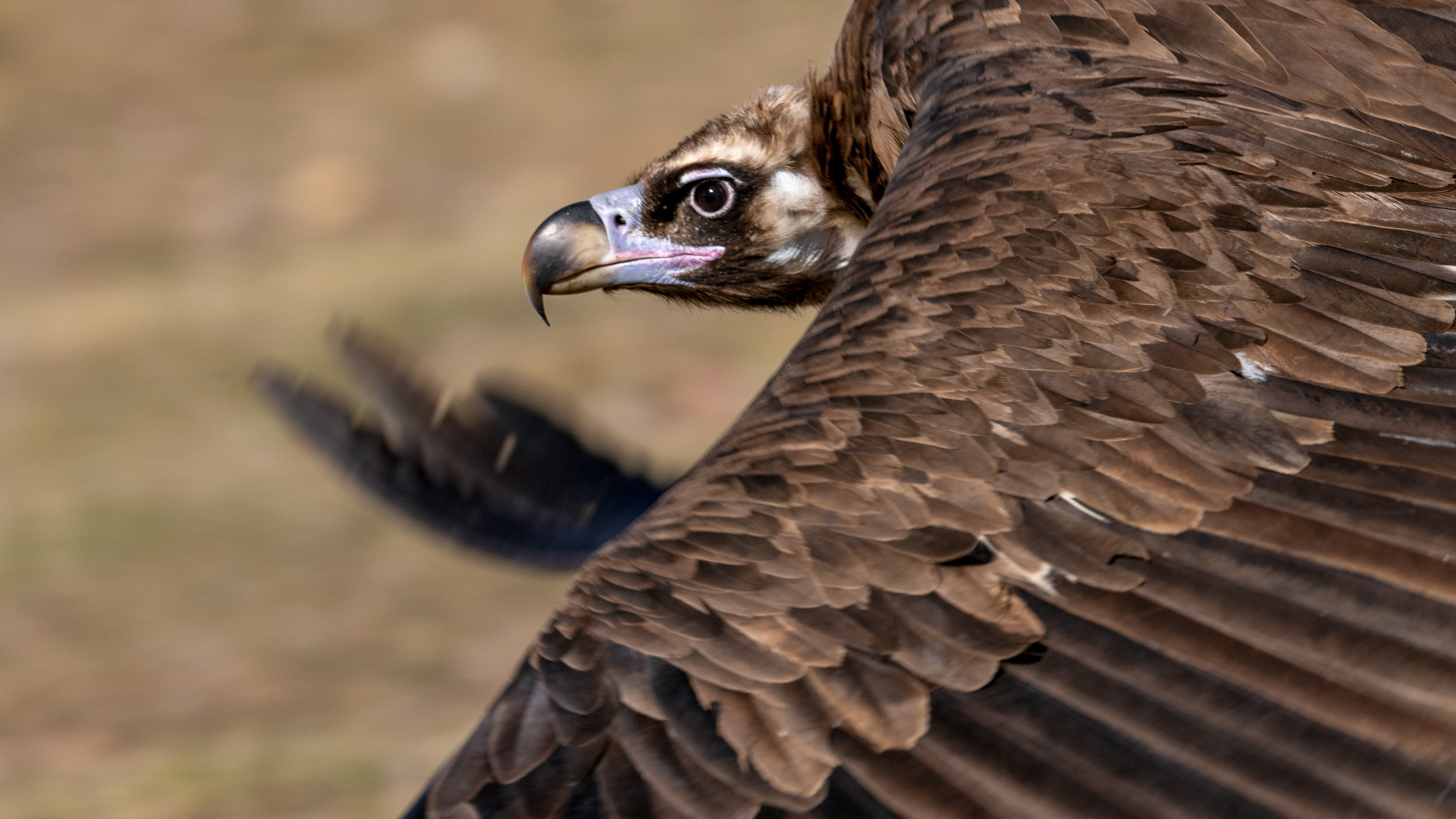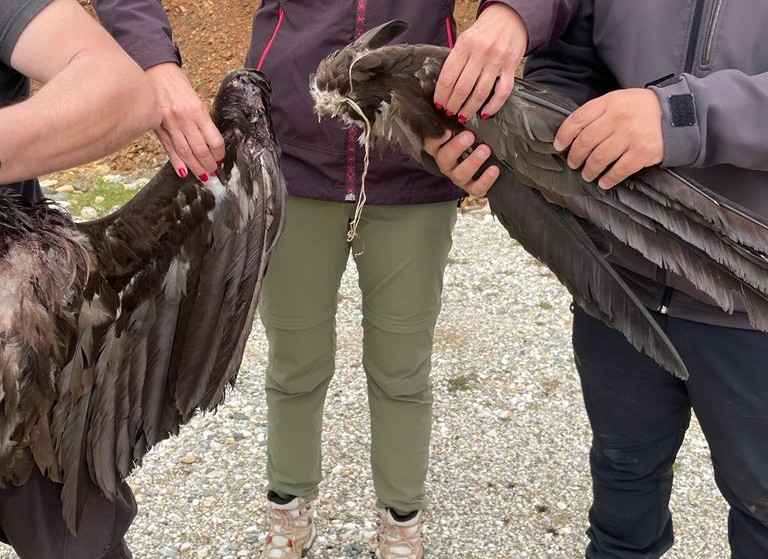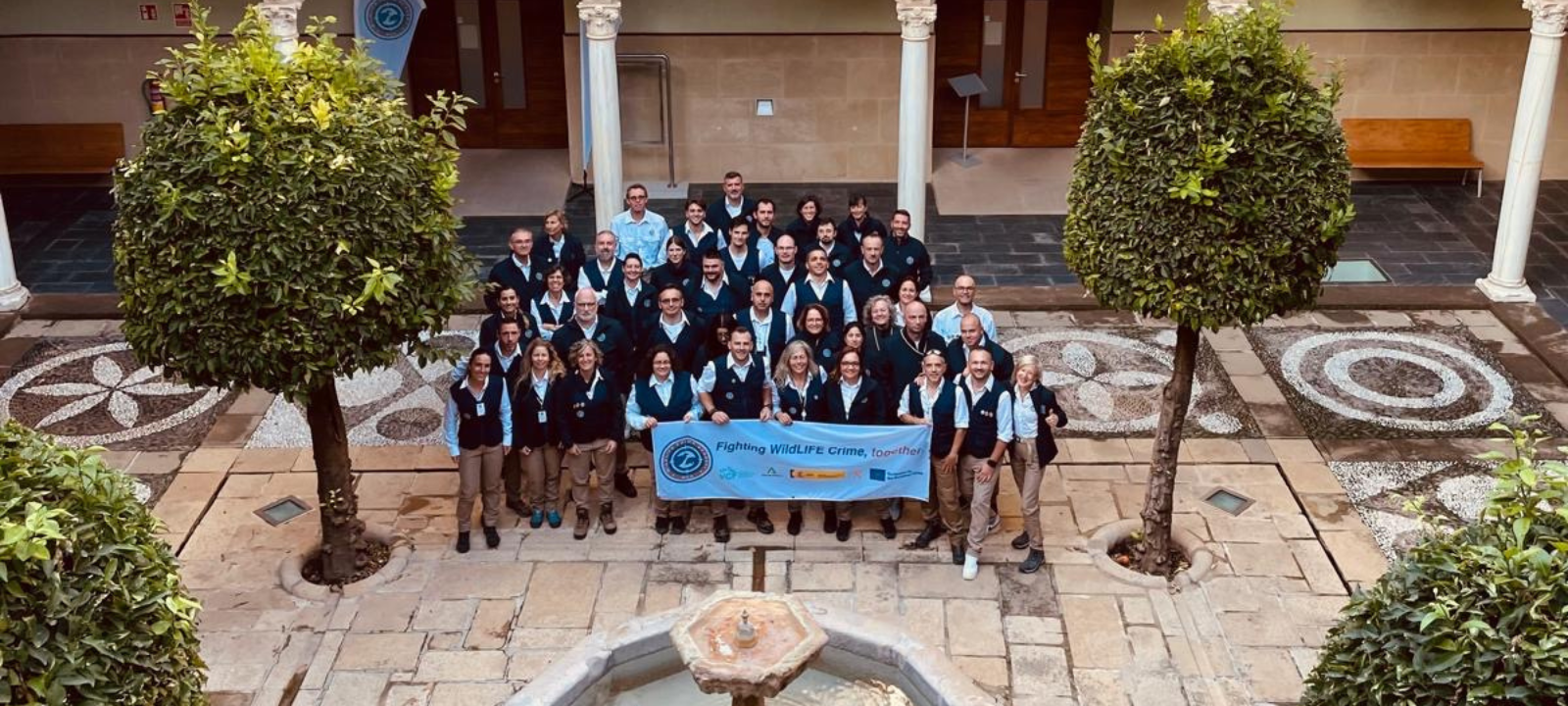The mortality rate of the monitored birds stands at 18% and is largely caused by human factors.
The 2025 breeding season – the third closely monitored by the projeto LIFE Aegypius Return project – is nearing its end. This year, nine Cinereous Vulture chicks were tagged in the nest, and the work was featured on national television (SIC)!
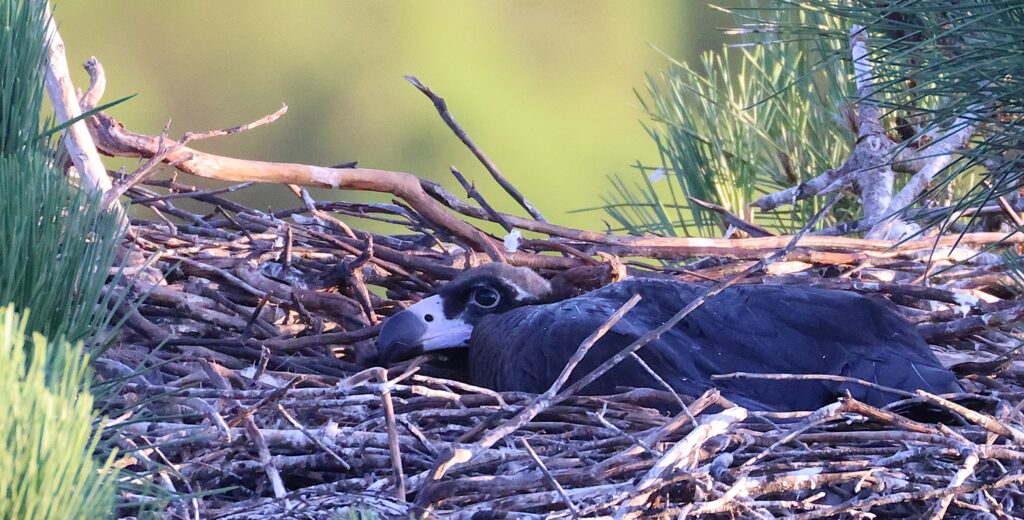
There are five Cinereous Vulture colonies in Portugal
A Cinereous Vulture (Aegypius monachus) is Europe’s largest bird of prey. It builds very large nests at the top of trees. It is also a gregarious species, organised in breeding colonies where younger birds can socialise and learn all vital behaviours from older individuals.
There are five known breeding colonies in Portugal: Douro Internacional, Serra da Malcata, Tejo Internacional, Herdade da Contenda and, most recently, Vidigueira/Portel. These colonies have been closely monitored by the LIFE Aegypius Return project teams and collaborating organisations since 2023. As part of the efforts to conserve the Cinereous Vulture – classified as Endangered in Portugal – reproduction is monitored in detail, and some birds are fitted with GPS/GSM transmitters. This technology allows the remote tracking of all movements and behaviours and enables intervention if necessary. It is also essential for understanding and tackling mortality factors.
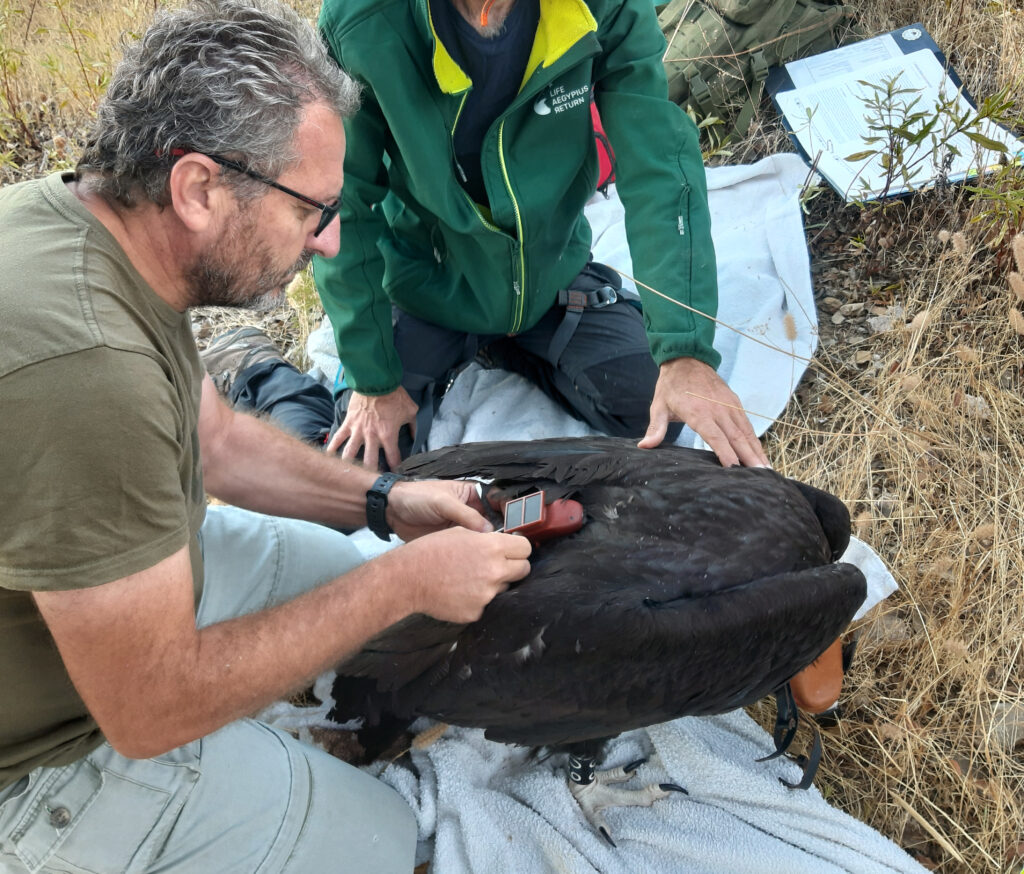
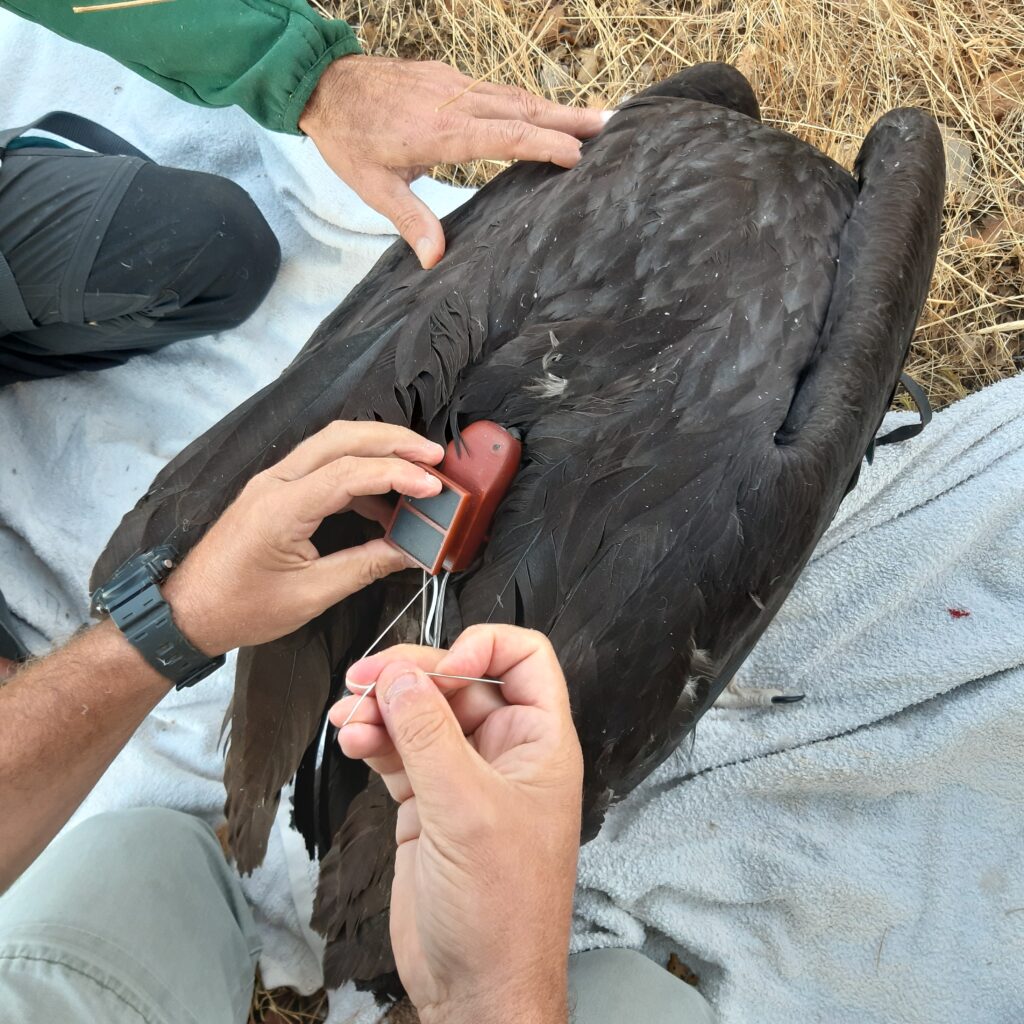
50 Cinereous Vultures with GPS/GSM transmitter
With chick tagging completed in June and July this year, the LIFE Aegypius Return project has reached the milestone of 50 Cinereous Vultures equipped with GPS/GSM transmitters. In total, 43 chicks in the nest have been tagged (15 in 2023, 19 in 2024 and 9 in 2025), along with two rehabilitated juveniles (Zimbro and Gerês), the senior Aravil and the four Cinereous Vultures that were held in acclimatisation in Douro Internacional in 2024.
Of these 50 birds, 37 are alive, nine (18%) have died, and four (all born in Serra da Malcata) are of unknown whereabouts, as their transmitters have been unable to connect to the GSM network to send information.
Of the nine Cinereous Vultures that have died, only three are confirmed to have died of natural causes. One (named Mirante) was shot, another (ring code 5J) was poisoned, and another (named Freixo) died in a collision with power lines. The deaths of the remaining three vultures remain under investigation.
The collection of this information was only possible thanks to remote tracking of tagged birds and the swift action of the project’s technicians and Portuguese and Spanish authorities in processing detected mortality cases.
Fortunately, remote data also makes it possible to save Cinereous Vultures that would otherwise have almost certainly died. Remember, for example, the stories of Natator, Pousio, Medronho and 5E.
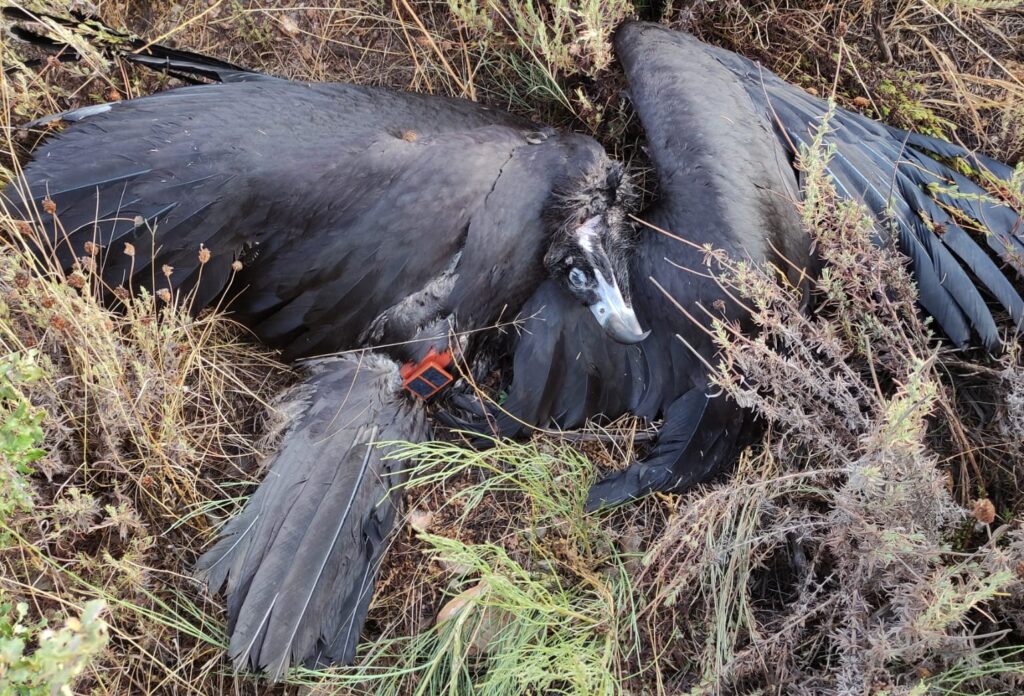
Tagging Cinereous Vultures: transmitters, rings and biological samples
In the context of the LIFE Aegypius Return project, the term “tagging” doesn’t just mean attaching GPS/GSM transmitters. For logistical reasons, some vultures are tagged only with identification rings placed on their legs. If the bird is observed or captured in the future, the rings also provide information on its origin and history.
As direct contact with these birds is quite rare, complex and subject to a number of legal permits, all opportunities are also used to collect biological samples such as blood and feathers. These materials are sent to specialist laboratories in Portugal and abroad to increase scientific knowledge of the species (e.g. genetic, biochemical and toxicological parameters) and improve veterinary and conservation care.
In total, the LIFE Aegypius Return project has already ringed and sampled 69 Cinereous Vultures (19 individuals in addition to those fitted with GPS/GSM transmitters).
All these procedures require the intervention of specialists duly accredited by the competent authorities.
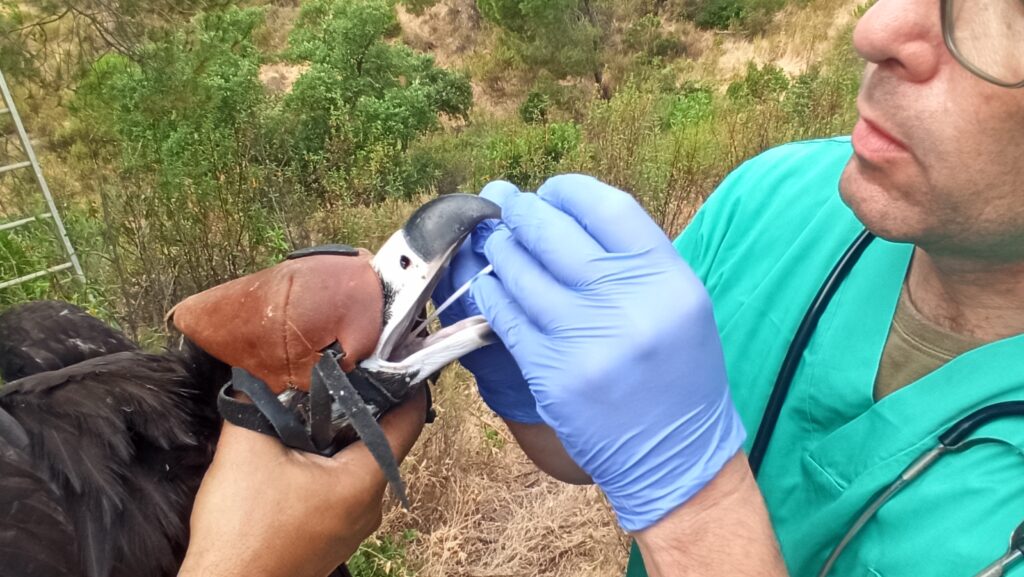
A unifying species
The conservation of the Cinereous Vulture is only possible through the cooperation of many people and institutions from various sectors. Examples of such joint efforts include breeding monitoring and tagging work, where collaboration is clearly visible.
The LIFE Aegypius Return partners thank all those involved in monitoring the Cinereous Vulture: technicians and rangers from the ICNF (Institute for Nature Conservation and Forests), Rewilding Portugal, Quercus, and the Agentes de Medio Ambiental from the Junta de Extremadura and the Junta de Andalucía.
For the tagging work carried out in July, thanks are extended to:
– Douro International: partners Palombar, ICNF – Direção Regional do Norte, veterinary team from HV-UTAD (Veterinary Hospital of the University of Trás-os-Montes and Alto Douro), Junta de Castilla y León, Arribes del Duero Natural Park, Biodiversity Research Institute (Instituto Mixto de Investigación en Biodiversidad (IMIB, CSIC-Universidad de Oviedo-Principado de Asturias), and BirdWings.
– Tejo Internacional: partners SPEA (Sociedade Portuguesa para o Estudo das Aves) and LPN (Liga para a Protecção da Natureza), Alfonso Godino (Hawk Mountain Sanctuary), Samuel Infante, Jade Gava (École Nationale Vétérinaire de Toulouse), CERAS (Centro de Estudos e Recuperação de Animais Selvagens/Quercus), ICNF – Direção Regional do Centro, João Esteves, Sérgio Saldanha, Daniel Barnett, Catarina Cerquido.
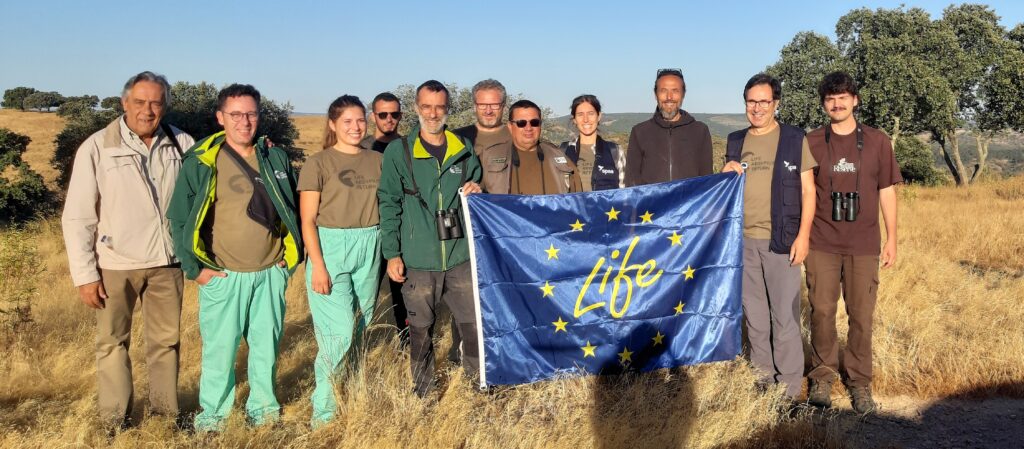
– Vidigueira/Portel: partners LPN and VCF (Vulture Conservation Foundation), Herdade do Monte da Ribeira – Eng. Mariana Carmona, ICNF – Direção Regional do Alentejo, Jade Gava, Maria Soares (University of Coimbra), Carlos Pacheco, and SIC – Alentejo reporting team (Daniela Alves and José Ribeiro).
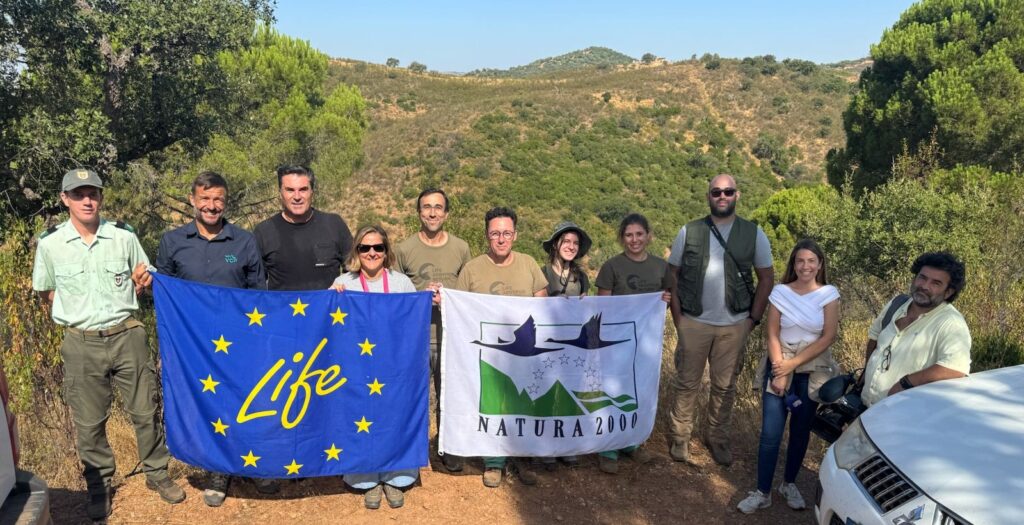
– Herdade da Contenda: partners LPN, VCF, Herdade da Contenda and GNR – Comando Territorial de Beja e Destacamento Territorial de Moura, Jade Gava, Maria Soares, Joaquim Pedro Ferreira (PlaySolutions), Carlos Cruz, José Álvares Figueira, Vítor Condeço, Margarida Rocha, Ana Delgado, Carlos Pacheco.
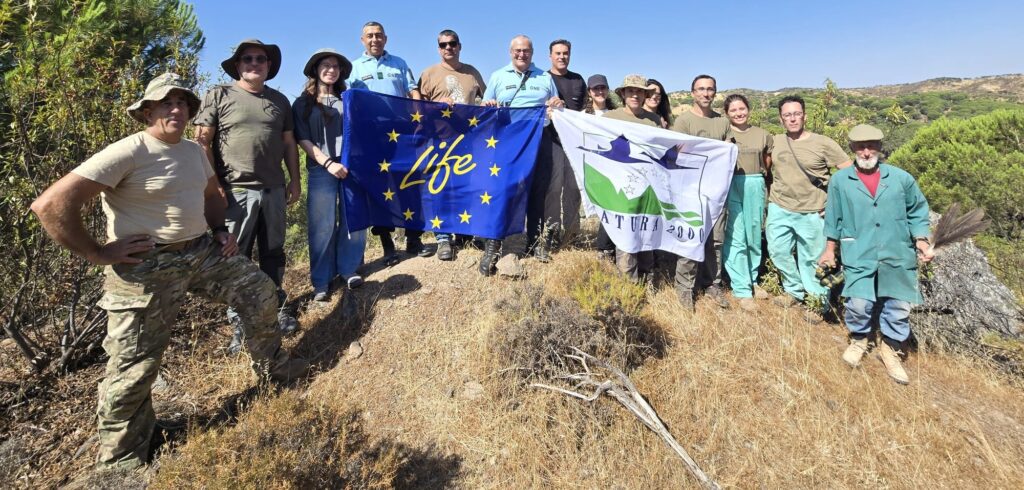
About LIFE Aegypius Return

O projeto LIFE Aegypius Return é cofinanciado pelo programa LIFE da União Europeia.O seu sucesso depende do envolvimento de todos os stakeholders relevantes, e da colaboração dos parceiros: a stakeholders, and the collaboration of the partners: the Vulture Conservation Foundation (VCF)beneficiário coordenador, e os parceiros locais Palombar – Conservação da Natureza e do Património Rural, Herdade da Contenda, Sociedade Portuguesa para o Estudo das Aves, Liga para a Protecção da Natureza, Associação Transumância e Natureza, Fundación Naturaleza y Hombre, Guarda Nacional Republicana e Associação Nacional de Proprietários Rurais Gestão Cinegética e Biodiversidade.

